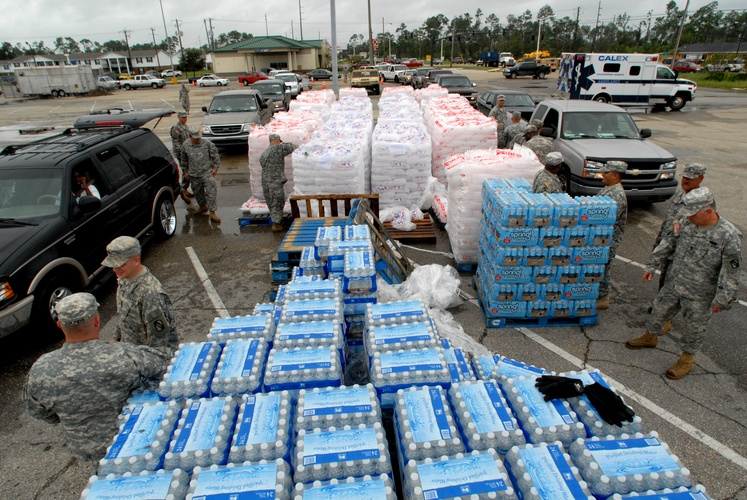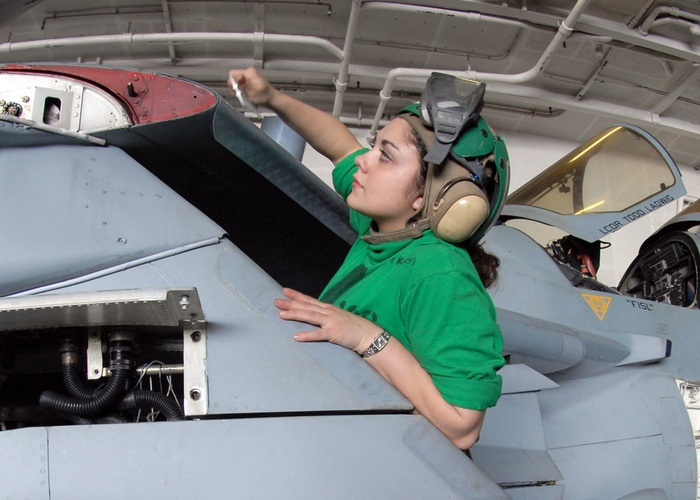While a good portion of military aircraft are made for tactical purposes and have no civilian crossover component at all, this isn’t the case with all military aircraft, or all of their parts. Once those aircraft are mothballed, a few things usually happen.
- They are stripped of all useable parts.
- Good parts are put back into military parts channels for use in flying aircraft.
- Parts can be demilitarized if necessary and sold to the civilian population.
- The empty hull of the aircraft is parked and preserved in the desert or
- It is chopped up and scrapped.
We’re going to talk about the demilitarization program and how it works. What does it need to function? How are parts ‘demilled’? And where do the parts go once they are demilitarized? Let’s find out.

What is Demilitarization?
So, the first question we hear asked is, ‘what is demilitarization?’
Demilitarization, in a nutshell, is the process of taking a part that is crucial to a weapon system’s lethality and taking away the component that makes it lethal. Of course, some components and parts are basically useless once demilitarized (cannons and other weapon delivery components are great examples). Demilitarized cannons, missiles, and other weapons are routinely used for props or for static displays by museums, city parks, etc.
But other parts and components of common systems can be demilitarized and then sold to civilian markets.
Take the Pratt & Whitney PT6 series of engines. These are the most popular and common turboprops in history and have been in continuous production for over six decades. They have powered countless aircraft, including some tactical aircraft. But there is nothing inherently tactical about the PT6, so once the aircraft has run its course and is ready to be put out to pasture, the engine or engine parts and components can be stripped and sold off or returned to the supply chain.
Once an entire aircraft MDS is retired, there is no longer a demand for the parts to return to the supply chain. But if there is a direct or similar civilian crossover, the Defense Logistics Agency (DLA) can sell the parts through its DEMIL program.
Definition
When we talk about military assets, demilitarization refers to the actions taken by either the military or a designated federal agency to render them useless for military purposes. Again, this only talks about military purposes. The vehicle, aircraft, or weapon system does not necessarily need to be rendered completely useless.
Purpose
The purpose of demilitarization is pretty straightforward: take a piece of military-specific equipment and take action to make it no longer capable of military actions. If it is an attack aircraft, it has to be rendered unable to conduct attack missions.
The AC-208 is a prime example of an aircraft that can be demilitarized once its service life is over. The AC-208 is essentially an armed C-208 Caravan equipped with hardpoints for dropping munitions or attaching missiles or rockets.
Once the targeting systems and hardpoints are removed, it goes back to being a Cessna Caravan that can be used by any civilian operator.
The Beechcraft T-34 Mentor is a great example of a military aircraft that uses very common components, including the PT6A-25 engine. The airframe itself shares a number of structural components with the Beechcraft Bonanza, so once the aircraft has been removed from service (which almost all of them have been), lots of parts can be sold to civilians.
Why do this?
Well, only a handful of T-34s are in service in specialized roles (test pilot schools, etc.). There is no need to keep a huge supply of parts in inventory for a few aircraft, so parts that can be demilled are put out on the civilian market or made available for FMS partners.
Process
This all depends on the part type, what aircraft it came from, and so on.
For instance, there isn’t much that can be used off of a fighter or attack aircraft by civilian operators. Parts of aircraft like the F-16 are seldom sold for commercial use because they have no application. Parts for these aircraft are either put back in the supply chain or are sold off to foreign operators.
Now, for aircraft that have common components, like the PT6 engine, for instance, and parts or components that are military specific and tactical in nature, these have to be removed. A more common component type where this occurs is avionics since these are more the heart and soul of tactical systems.
When a component is deemed to require demilitarization, the applicable regulation must be followed to the letter. The Defense Demilitarization Procedural Guidance is the official guidance for demilling all kinds of military equipment.
Types of Demilitarized Parts
Here’s the breakdown of common demilitarized parts:

Common Parts
A few of the most common demilitarized aircraft parts are rocket launchers, aircraft pylons, guns, pylon (hardpoint) parts. Again, these are all parts that are used for the explicit purpose of weapon and ordnance delivery. So, their application is limited in civilian markets beyond being used for historically accurate warbirds.
Restrictions and Limitations
Generally speaking, most demilled parts are functionally useless after they are demilled. Of course, this general statement does not apply to all parts. Vehicles are much more useful when demilitarized, whereas there isn’t a lot of value in demilitarizing the weapons systems on an aircraft.
Many military vehicles include personnel carriers and Mine Resistant Ambush Protected (MRAP) vehicles.
Uses of Demilitarized Parts
Okay, so how are demilitarized parts commonly used?
Civil Aviation
The value of demilitarized parts depends greatly on the application. If it is an engine or propellor that is common to many civil aircraft, then demilitarized parts can be of great value. But a demilitarized weapon pylon or rocket launcher? That is really only good for a warbird or some other similar presentation or historical piece. Museums and warbird clubs work hard to acquire demilitarized weapons, but they have very little value outside of these groups.
Commercial Applications
Commercially speaking, demilitarizard parts only offer value if they can basically reduce the bottom line. If they can pick up engine components that are compatible with their fleet and have been maintained and all logs are kept, then it is a win. Otherwise, demilitarized parts have no value to commercial aviation.

Advantages and Disadvantages of Using Demilitarized Parts
There are some definite advantages to using demilitarized parts, but also some strict limitations.
Advantages
If you can find parts for the application in question, then buying demilled parts can save a lot of money. But that is an if. It only works if there is a surplus of parts that can be demilled and have been demilled. They are often times quite cheap, so that is good. Of course, they might not have been used in some time, or the maintenance logs are incomplete. But still, it can be a viable option.
Disadvantages
The legal and regulatory hurdles are probably the worst problems associated with buying demilitarized parts. A significant regulatory burden is associated with these parts, so you must be mindful that it can be a pain.
Also, the lifespan of the part or component may be much shorter than buying an OEM or a certified rebuild. This isn’t always the case, but the military does tend to offload items that it doesn’t see the necessity in either overhauling or putting money and effort into.
The Bottom Line
Demilitarized parts are an option for supplying parts for a fleet that can save money if you play your cards right. But it relies on there being a supply of parts in the first place and that they are compatible in the first place. Also, it is not always advantageous for the military to go through the effort to demilitarize items. The process is highly regulated, so scrapping it is easier for them.
But it can be a good deal if you look closely and find something that works for your application. Patience and a willingness to look for the things you need will go a long way toward successfully acquiring demilled parts. And remember, there are no guarantees that there will ever be anything compatible with your demands.
With that in mind, you might find exactly what you need. Make sure to brush up on the regulations to have an idea of what you are getting yourself into.
Resources
Demilitarization (DEMIL) & Trade Security
Search the EAR | Bureau of Industry and Security
dod manual 4160.28, volume 1 defense demilitarization: program administration


.svg)


.png)


